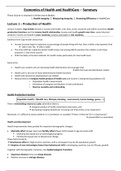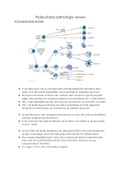Summary
Economics of Health and Healthcare Summary
- Course
- Institution
- Book
The document is a summary of all the lectures and the mandatory literature for this course. The content has not been simply copy-pasted but improved and rephrased in simple and understandable terms. The document contains several tables and figures that make it simple to read and easy to understand....
[Show more]





